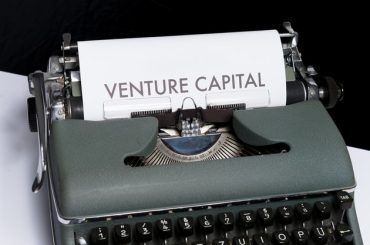Zypp Electric is a leading last-mile delivery fleet management company operating with 100% Electric Vehicles. They are present across 10 cities in India, have a fleet of 2,000 vehicles, and complete 10,000 deliveries every day. With every delivery, Zypp Electric is reducing the carbon footprint of logistics and increasing the savings per delivery for the delivery executives.
Arjun Vasudev, a contributing writer at The Strategy Story, spoke to the Co-founder and CEO of Zypp Electric, Akash Gupta, and understood how Zypp Electric is transforming future mobility through electric fleets. Here is an excerpt of the interview.
Could you please introduce yourself and your company Zypp Electric to our readers?
I am Akash Gupta, and I am co-founder and CEO of Zypp Electric. Zypp Electric is the largest sustainable fleet that is solving last-mile logistics, especially same-day deliveries. Our primary focus is to reduce pollution on every delivery. We are a 100% sustainable last-mile delivery option.
The second goal is to keep the cost of logistics low. Last-mile delivery contributes to 50% of logistics costs, and we are bringing that cost down for our customers. Our third aim is to help save the delivery executives more money. Since deliveries happen over Electric Vehicles, the delivery executives hold more and, in turn, earn more.
This company is working at the intersection of the three hot topics: E-commerce, mobility, and sustainability. This is the decade of EVs (Electric Vehicles), so the idea was to create something that will grow into a Unicorn.
In my research, I noticed that you had had an interesting pivot. Could you comment on that?
When we started this in August 2017, our single aim was to reduce pollution in mobility. There were two areas we could tackle. One is last-mile mobility, and the other is last-mile delivery. We started with last-mile mobility; we called ourselves “Mobycy” then.
We created a friendly app and got good traction and appeal from users. However, we realized that we were ahead of time. Infrastructure and willingness of users were missing. But that is how we started, and we learned a lot in the process. Now we carry those learnings to Zypp.
We had last-mile delivery customers reaching out to us, asking if we could deliver to them. That is when we started pivoting towards deliveries around two years back. We started working with the likes of Amazon and Big Basket, giving us a good sense of what they want. It was also the first time that these companies realized that things could be delivered on EV.
We created charging stations, swapping stations, and many such things to make this work. It worked very well, and there was no looking back. When lockdown happened, lot many brands approached us asking for essential deliveries. They had stores and wanted to know if we could deliver for them. The storeowners recognized how Zypp stood by them in the crucial hour, continuing to work with us. Today we are “the largest last-mile EV logistics ecosystem.”
As our slogan says, “Khushiyon ki delivery.”
Numbers have completely changed post the pivot. I can give you a couple of metrics that our pre-pivot revenue was X, and today it is 10X. That is the scale we have grown to within the last 18-20 months. We do 10,000 deliveries a day, which is 300,000 shipments per month. We had a team of 35 people, and now we are a team of 140 people. We were just in Gurgaon then, and now we are in 10 cities. We have expanded on all fronts.
Our next step is a rapid expansion from 10 to 25 cities and from 2,000 vehicles to 10,000 vehicles in the next 12 to 18 months. We are already having three-wheelers in our business. We launched in 5 cities over the last four months, and we understand how the expansion game works and setting up the right teams for that.
How does Zypp Electric stay ahead of competition in mobility business?
We have three competitive strategies.
- First and foremost is technology. We are way ahead of our competition or of anyone who is thinking electric. We feel that we understand the Electric Vehicle the most. We have worked with a variety of OEMs and batteries and run on rugged terrains. With so much experience and knowledge, no one would understand electric two-wheelers better than us in the Indian ecosystem.
- Second, the understanding of the delivery executive who is delivering on the EVs. We built the entire tech and pilot app, charging & swapping infrastructure, and the whole ecosystem keeping that delivery executive in mind. While he is our pilot, he needs to be happy doing that. He has to continue to see that he can deliver more orders and can earn more. We are giving that infrastructure to them.
- The third is scale. The key is to scale up so fast that others cannot reach your rankings in the startup world. This is also where we find exciting ways to get our assets leased by third-party investors, get funds at the right time, or get the right team to deliver the promise.
You mention a lot about IoT, AI & ML-enabled advantages on your website. Could you elaborate on what kind of advantages you are getting and how you are leveraging data?
Absolutely. We are building a data company instead of logistics. The future of mobility is all about data and the kind of insights we get. We get every data point of the vehicle: the brake shoes, the tires, the batteries, the riding patterns, the mobilization or geo-fencing. Our data will be a gold mine for the OEMs that want to build future scooters or batteries.
We get a lot of data from our customers too. Who are these customers, what are they ordering, how often they are ordering, what platforms they are ordering from, and how much carbon they are saving? That is also considerable data that we have of the customers, which can help us monetize in the future.
We generate a lot of data from the delivery executive. Where is he coming from, how long does he work, his credit score, his earning pattern, and his saving pattern. The data is high-impact data on the “India story” perspective. Since everything is tech-enabled, there is a lot more data about deliveries.
How to optimize the subsequent delivery, how to save cost for our customers on the next delivery. We can use all this data to feed into a drone delivery system or an autonomous delivery ecosystem. We can write AI/ML algorithms to ensure better asset utilization. All those things are part of the data funnel that we have built, which will create a lot of monetization in the future.
In addition, we are the only company that has done full-stack data in-house. We see companies trying to outsource or use SaaS panels, we have our own data machinery, and everything is sitting on our servers. All that SaaS is in-house.
The ecosystem is so broad that B2B partnerships are also essential. Could you comment about the partnerships you have and some of the big names you are working with? How did you enable this, and how are you going forward and uniting the entire ecosystem.
We are the only company delivering with EVs having such a vast client list working with us. We work with a range of companies across industries:
- E-commerce companies such as Amazon, Flipkart, and Myntra
- E-grocery companies such as Big Basket, Grofers, and Jio Mart
- Bike taxi providers like Uber and Rapido
- Food tech players Swiggy and Zomato
- Top E-stores and largest retail format stores like EZday and Spencer
- Social commerce platforms like Dealshare and Citymall
They all want to go electric and become sustainable, which is one of the reasons these brands work with us. We have 100+ B2B customers who are working and growing with us. They could be leaders in their domain, but when it comes to logistics, they work with Zypp. That is because we can deliver on the promise of on-time deliveries and sustainable & pollution-free deliveries.
We have a client helpline and a huge rider support program to ensure that we listen to them and solve their problems. Logistics is all about solving it better than anyone else does, and continuously taking feedback and improving ourselves is what we have done.
You have recently entered two new cities. Every city in India is different; how is your marketing strategy different for each city?
Our marketing strategy is straightforward. We do not essentially have to do marketing. One, since we are electric, there is a pull from the market. The thing that does the best of our marketing is our vehicles and our delivery executives. Everything we do is branded. Our delivery executives wear Zypp Helmet, Zypp T-shirt that is green, ride Zypp scooter that is green and branded Zypp.
EV anyway sticks out; the vehicles are different and are built for logistics. When I ride our vehicle, people stop me and ask me about the EV and its mileage. So we are getting a lot of marketing and branding on the ground.
Our word is out to the customers while we are delivering our goods. When I have meetings with anyone coming from outside, they share that they saw a few Zypps on the road, which is marketing for us.
Second, since we are a last-mile logistics player for businesses that are spending money to get customers, we do not have to spend money. All we need is to serve that customer who already has a demand.
Could you elaborate on your biggest challenge and how you have crossed that hurdle?
The kind of challenges we faced while building Zypp have been humungous. We have seen vehicles that break, batteries that do not work, and rains leading to waterlogging, bringing our deliveries to a standstill.
But the biggest challenge for a startup is to find the right team members.
That entrepreneurial DNA to jump into any situation and come out as a winner is what we want to build Zypp. Early on, it was tough to find talent, but now talent is flowing in. It is now about spending the right time, bandwidth and creating the policies and culture which is great for people to perform, learn, grow and then attract more people.
What has been the most significant strategic mistake you have made, and how did you correct that mistake?
In our journey concerning Mobycy, we made a strategic mistake. When we launched Mobycy, we started our bikes in Gurgaon, and we wanted to expand quickly. We established in a few more cities before proving yourself to the market comprehensively.
Before going to Noida, Delhi, Ghaziabad, and Faridabad, we directly launched Pune and Bangalore. That is the biggest mistake I would say that young startups tend to make.
They expand very quickly without finding the product-market fit or forming a playbook.
One can increase their expenses a lot and realize that they made a mistake. But we learned from it. When we created Zypp, we stayed in NCR for the first 18 months and continued to prove here.
How has Zypp Electric ensured that its drivers are safe and happy with the deliveries that they do?
We are working on a critical point that we are working on, and the most significant goal we have set ourselves for the next 12 months is to create 5,000 happy pilots. We have assembled teams around that, built platforms where they can share their concerns; everything is built around the rider’s happiness.
When we say “Khushiyon ki Delivery,” it is not just for the B2B customer; it is for the delivery executive as well. Once the executive is happy, everyone in the ecosystem will be satisfied. We give them insurance, benefits, and incentives.
Also, we do not want them to work for Zypp; we want them to work for themselves. Once they start thinking that this is their passion, they will come by themselves. We do not want to stress them either; we are creating a tech that fills in slots. If you would like to work for just 2 hours or 5 hours, you get that option at Zypp. That is the ecosystem we want to build.
-AMAZONPOLLY-ONLYWORDS-START-
Also, check out our most loved stories below

Why did Michelin, a tire company, decide to rate restaurants?
Is ‘Michelin Star’ by the same Michelin that sells tires, yes, it is! But Why? How a tire company evaluations became most coveted in the culinary industry?

Starbucks prices products on value not cost. Why?
In value-based pricing, products are price based on the perceived value instead of cost. Starbucks has mastered the art of value-based pricing. How?

Nike doesn’t sell shoes. It sells an idea!!
Nike has built one of the most powerful brands in the world through its benefit-based marketing strategy. What is this strategy and how Nike has used it?

Domino’s is not a pizza delivery company. What is it then?
How one step towards digital transformation completely changed the brand perception of Domino’s from a pizza delivery company to a technology company?

Why does Tesla’s Zero Dollar Budget Marketing Strategy work?
Touted as the most valuable car company in the world, Tesla firmly sticks to its zero-dollar marketing. Then what is Tesla’s marketing strategy?

Yahoo! The story of strategic mistakes
Yahoo’s story or case study is full of strategic mistakes. From wrong to missed acquisitions, wrong CEOs, the list is endless. No matter how great the product was!!

Apple – A Unique Take on Social Media Strategy
Apple’s social media strategy is extremely unusual. In this piece, we connect Apple’s unique and successful take on social media to its core values.
-AMAZONPOLLY-ONLYWORDS-END-

















